Say what you will about how bad weather forecasts are, but check for yourself. Since our last official BMS Tropical Update post here on 9/29/2025, we discussed “What is next and are we landfall-free?” In that post, we provided objective guidance indicating that climate models suggest tropical troubles will affect areas of the Central Caribbean between October 20th and 27th. Sure, since the last post, Tropical Storms Jerry, Karen, and Lorenzo formed, but they were short-lived and didn't amount to anything spectacular, except for boosting the overall Named Storm count for the season, which is questionable. Regardless, the Atlantic basin is now at the unlucky number 13, with Halloween approaching next week, things are about to get potentially scary.
As expected by the climate models shown in our last post, the likely endgame of the Atlantic Hurricane Season, Tropical Storm Melissa, is now in the central Caribbean Sea, about 300 miles southwest of Port-au-Prince, Haiti. This 13th named storm of the 2025 Atlantic Hurricane season puts the season on par with the average date of the 13th storm based on the 30-year climatology and one storm away from having an average season of 14 named storms.
Fuels for Unlucky Number 13
Unfortunately, the number 13 is considered unlucky, and there is a good chance Melissa might be one of the few storms to get retired this season, given its expected forecast, which is somewhat unsettling.
Currently, Melissa is a highly sheared tropical system working its way across what is often known as the graveyard of the Caribbean Sea. In fact, looking at all the named storm formations since 1851, it's formed in an area that does not often see named storm formation.
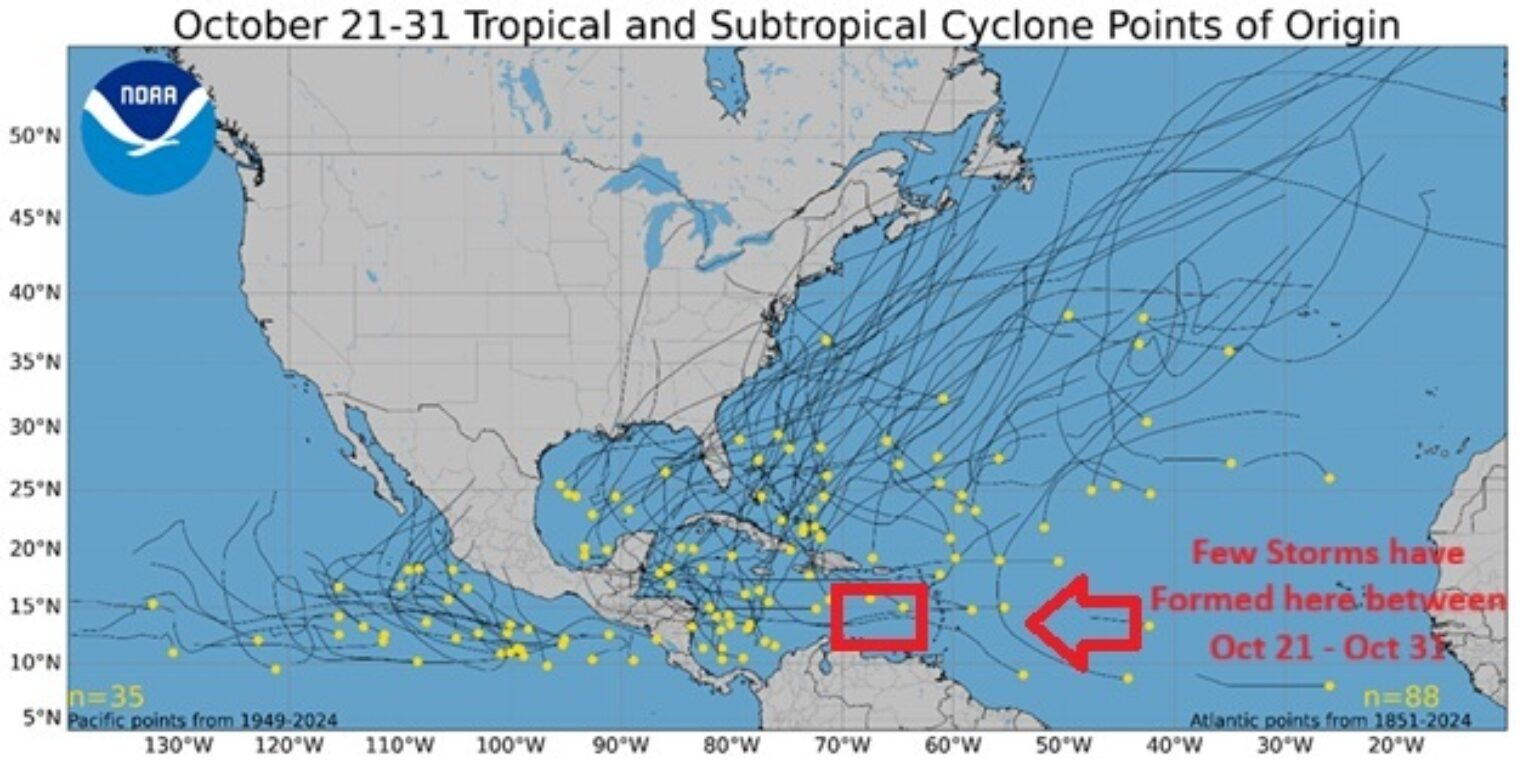
Melissa has already defied the odds and is showing its intensity to overcome strong wind shear, likely due to the very warm waters feeding deep tropical convection. The plot below (left) from Kim Wood at the University of Arizona shows Caribbean waters at their third warmest since 1982—only 2023 and 2024 were warmer—yet this region has seen zero storm activity since Beryl last year. However, it's not just surface sea surface temperatures that are the concern with Melissa, but the ocean heat content. Ocean heat content is essentially the thermal energy stored in a volume of ocean, and it is also very high, as indicated in the plot below (right) from the University of Miami.
The plot to the left below shows the sea surface temperatures across the Caribbean Sea by month. The black line represents the average temperature of the gray lines (each year since 1982). The blue line is the temperature profile for this year. The plot below to the right shows the ocean heat content by month for the Caribbean Sea. The blue line here is the aveage and the red line indicates the current values in 2024 which show near record heat content just behind 2023 and 2024. There is plenty of fuel when the shear subsides.
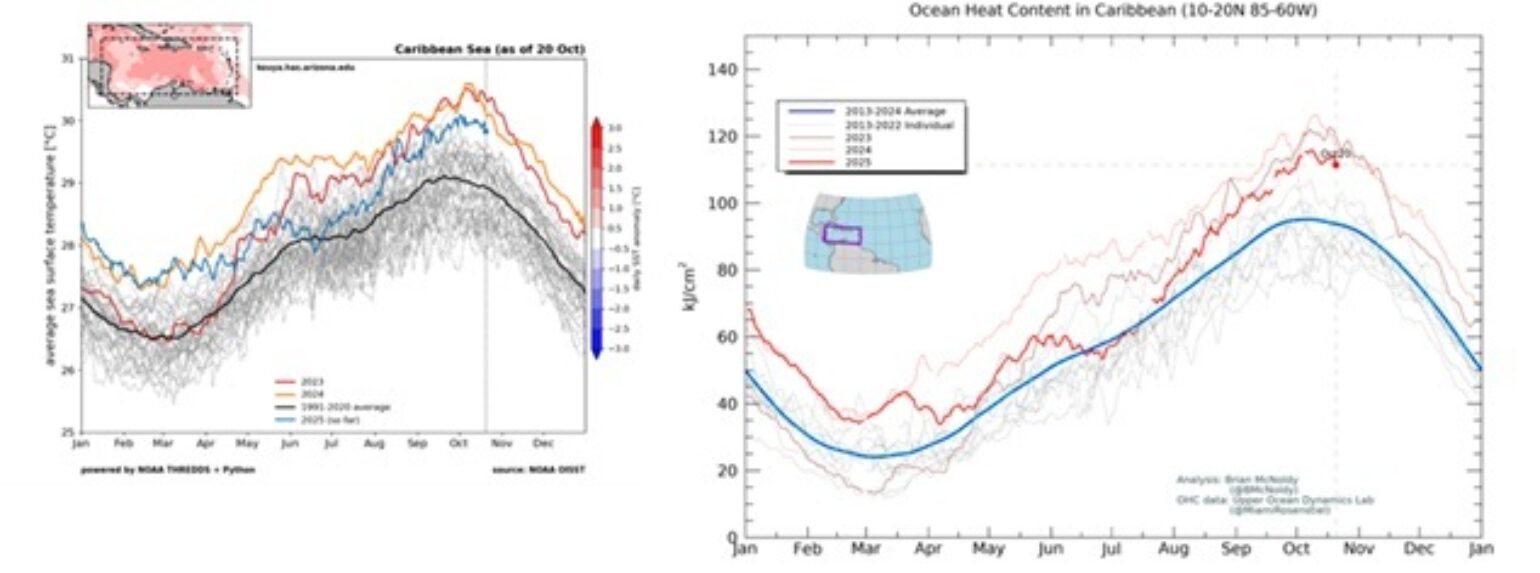
This ocean heat content is important because if you notice from the National Hurricane Center (NHC) cone of uncertainty, the forecasted track of Melissa isn’t going to go very far over the next 5 days. This will allow Melissa to feed off this deep ocean heat content as it slowly moves west. In fact, it may take the better part of the next 7 days for Melissa to leave the general area of the Central Caribbean Sea. So even though there might be upwelling over the next 7 days, the upwelling is just upwelling more warm water.
Track Uncertainty with Melissa
As indicated by the NHC cone of uncertainty, which, as a reminder, on a 5-day forecast, has a diameter of about 500 miles, the reason the cone looks this way is that Melissa won’t be moving very fast. The reason for Melissa’s lack of speed, is that steering for a tropical system this time of year can be very tricky, given the dynamics of the mid-latitude jet evolving very quickly as fall sets in. Currently, Melissa appears to be too far south for rapidly moving troughs of low pressure in the Continental U.S. to pick up Melissa and carry it northeastward. It would seem the best chance for Melissa to be picked up by the next trough of low pressure won’t come until the middle of next week. It should be noted that some other media mentions of the Melissa track have a quicker northward curve as Melissa strengthens faster and abruptly moves northeastward into the Central Atlantic by early next week. Still, this scenario is mainly from the American GFS model, which is often wrong and leads to increased forecast uncertainty.
What is likely to occur is a sluggish movement into next week as Melissa wanders farther west over the warm western Caribbean Sea into early next week before finally taking a northeastward track towards Jamaica, Cuba, and the Bahamas. Melissa currently presents a very low risk to the U.S. mainland, South Florida, and maybe the Northeast in the very long-range forecast (think Sandy-type event). However, the uncertain timing of her northward turn means this system must be closely monitored as it intensifies. Generally, we display the Super Ensemble. However, since Tomer Burg's Super Ensemble includes the GFS model, we don’t need to increase the forecast uncertainty. Below, we are showing the Google DeepMind forecast ensemble track density instead. This forecast model has been the best-performing model this season, so it needs to be considered. The overall track density indicates that Melissa will likely stall over the next few days before moving toward Jamaica later next week, with a high track probability taking Melissa over Jamaica, Cuba, and the southern Bahamas as an end game.
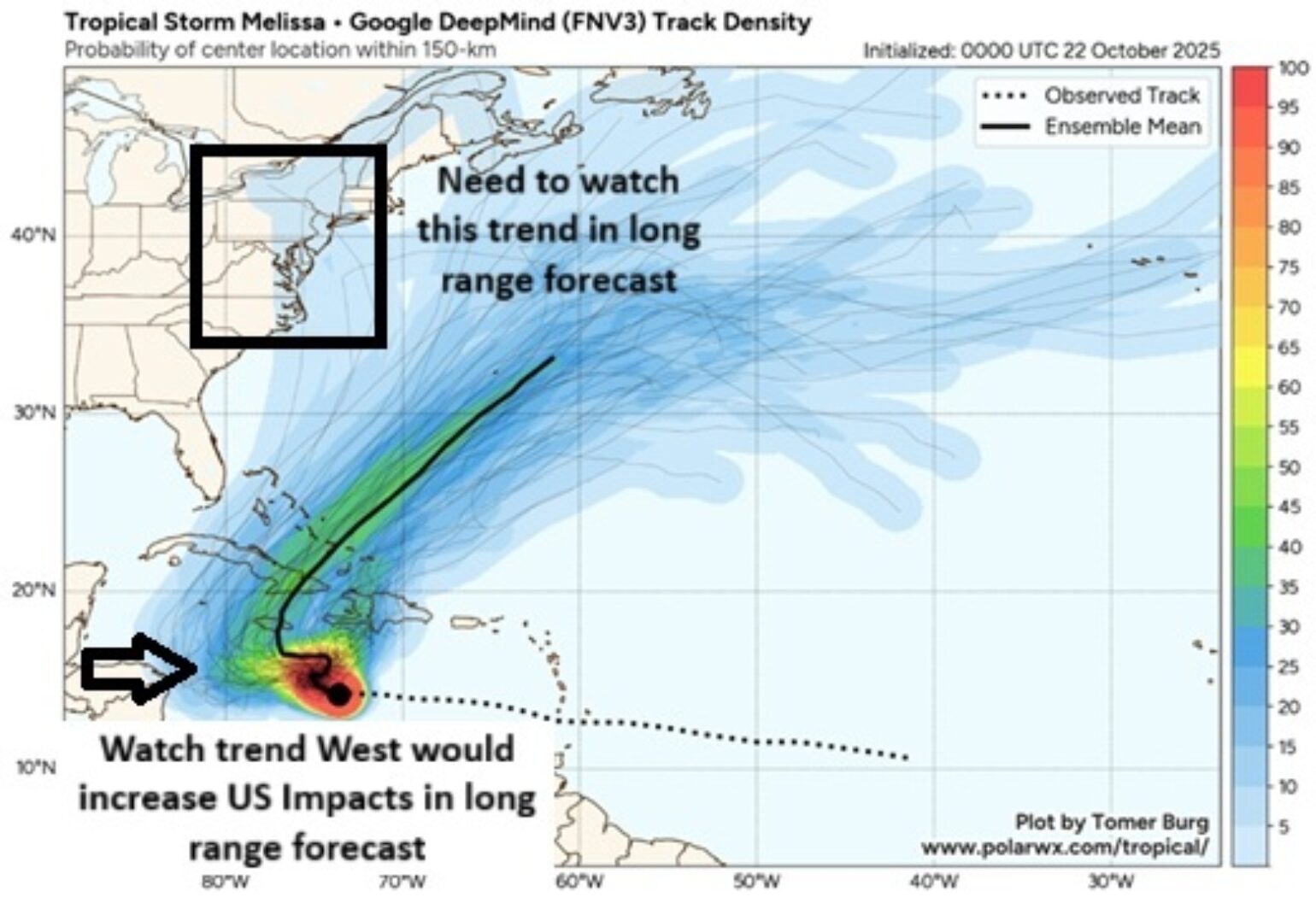
Scary Forecast Intensity for Melissa
Now, using the same plot but examining the overall intensity of the 50 ensemble members, the results become alarming and unfavorable. Early next week, if Melissa tracks south of Jamaica, the ocean heat content is high, and wind shear will decrease, allowing Melissa to become a very powerful hurricane. In the ensemble members, each member is labelled by F###, with the forecast hour of the lowest pressure indicated to the right. Some of these low-pressure readings are very impressive for this part of the Caribbean. In fact, many of these pressures indicate a category 5 hurricane, and many come very close to Jamaica, which means Jamaica might have its first category 5 hurricane landfall since Hurricane Gilbert in 1988. Not all forecasts are classified as category 5, but nearly all forecasts indicate a major hurricane will occur by early next week.
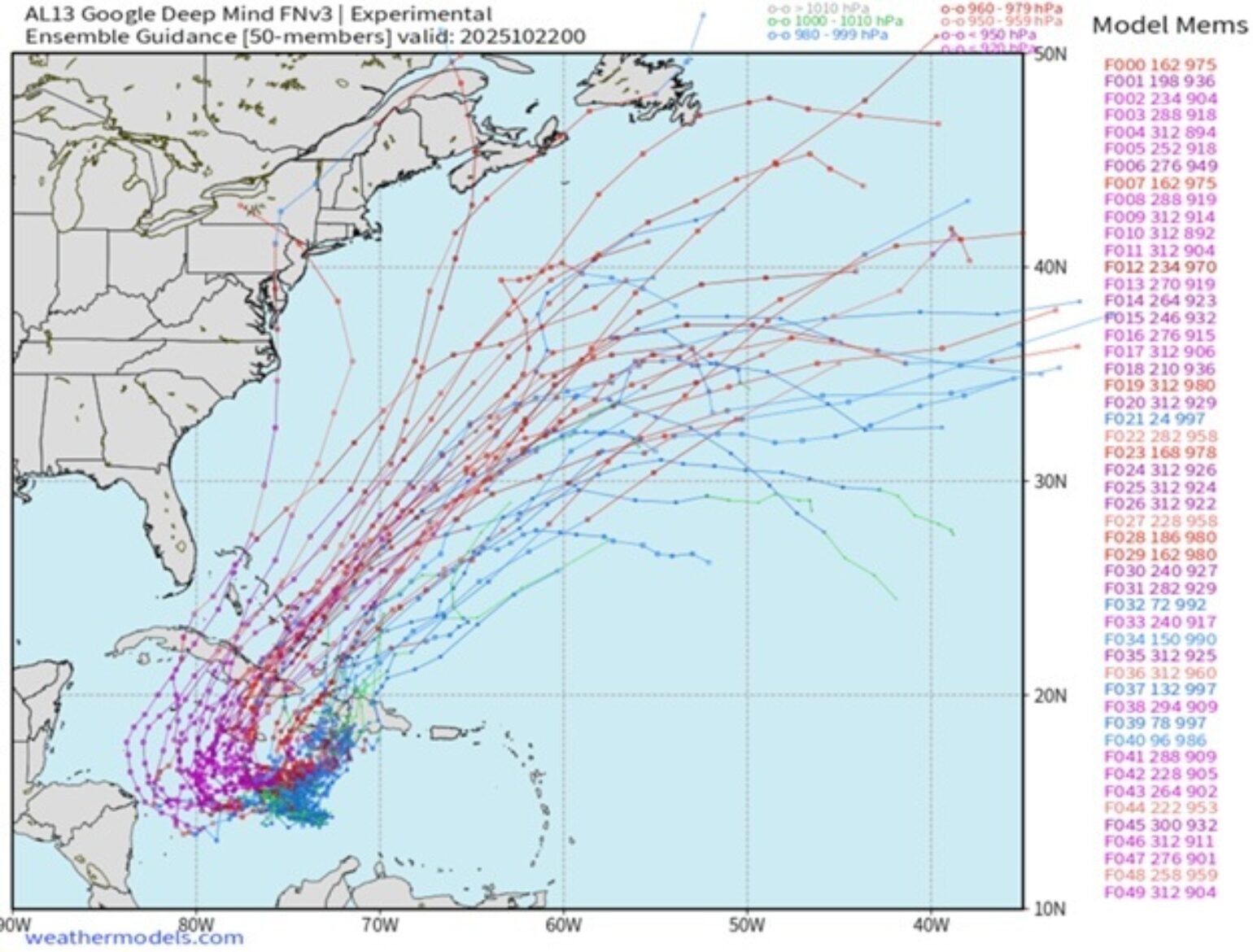
Below is the current 5-day forecast of our BMS Verisk Respond 3-second wind gust, which also shows Melissa stalling, tracking west, and growing into a large, powerful, major hurricane in the next 5 days.
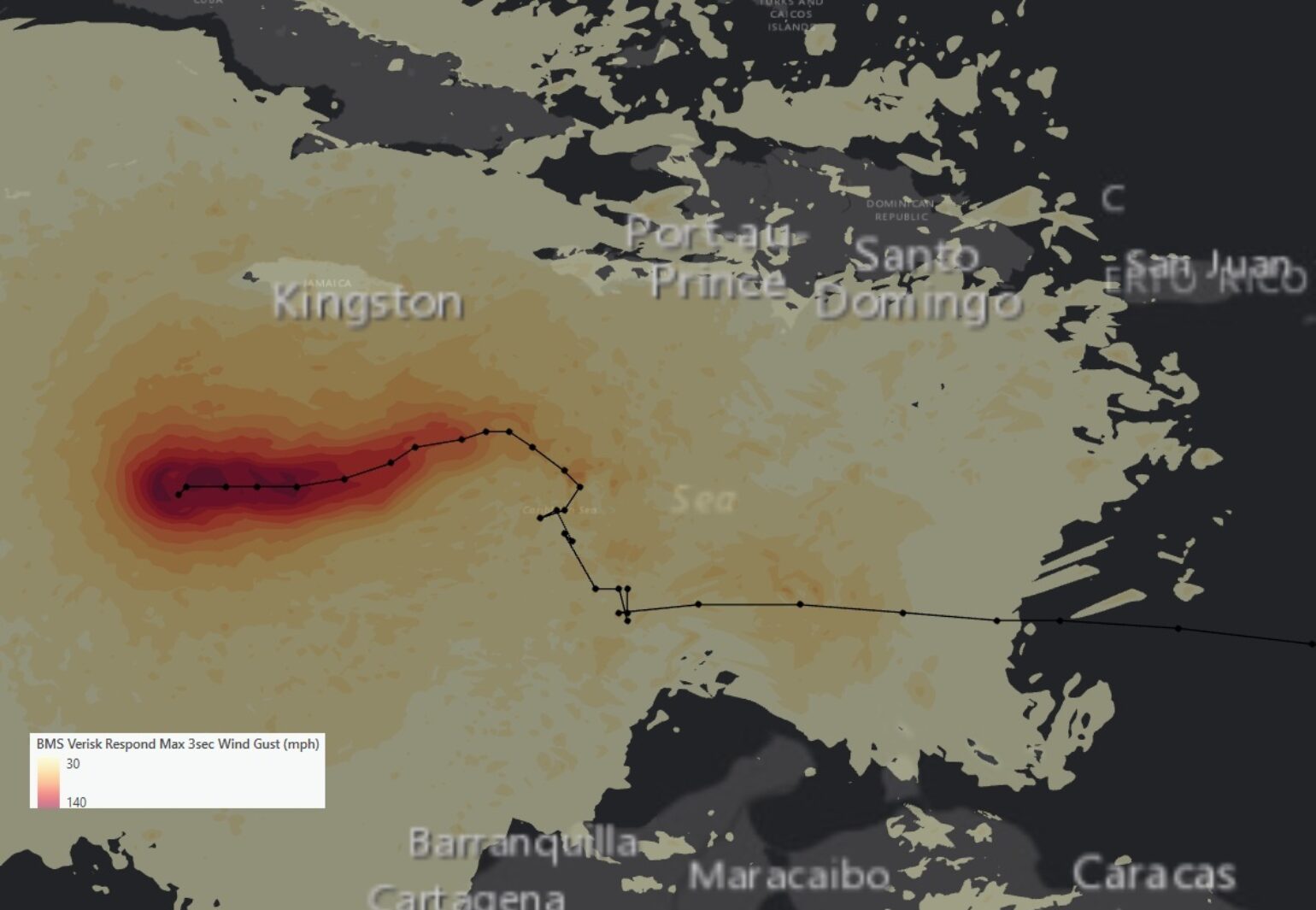
Regardless of overall intensity, the BMS Tropical Update post indicates that climate models foresee tropical trouble in the Caribbean Sea, characterized by excessive precipitation. The ECMWF model below shows this will indeed be the case, with much of the area seeing rainfall amounts of 30+ inches of rain over the next 7 days. In Haiti, Cuba, and Jamaica, past experiences of heavy rains have resulted in catastrophic flooding and landslides in the hilly and mountainous terrain.
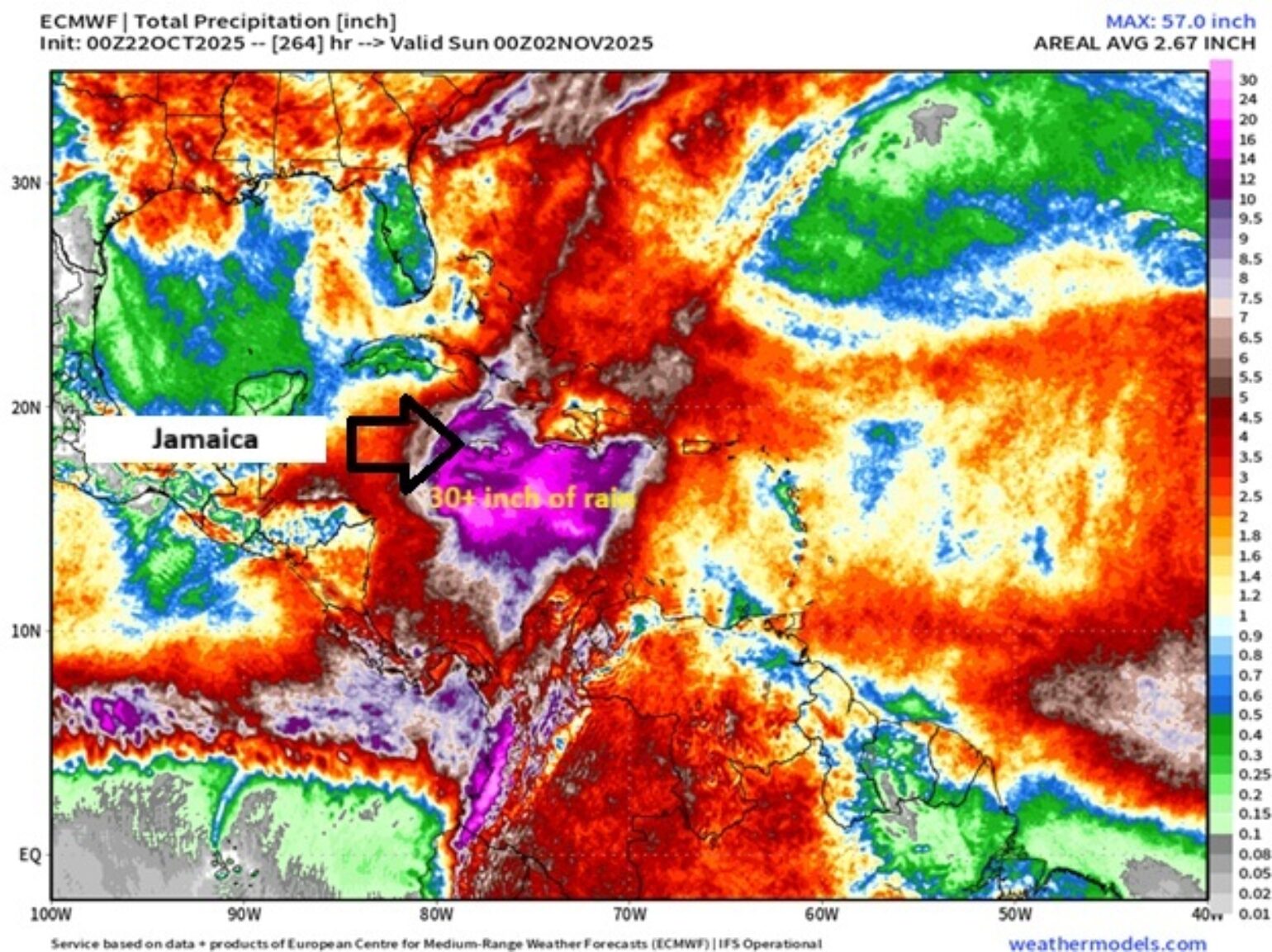
Bottomline: Tropical Storm Melissa is forecast to be a major Caribbean flood threat. Although there is forecast uncertainty in track and intensity, significant impacts are expected in Haiti, Jamaica, and Cuba in the next 10 days.
